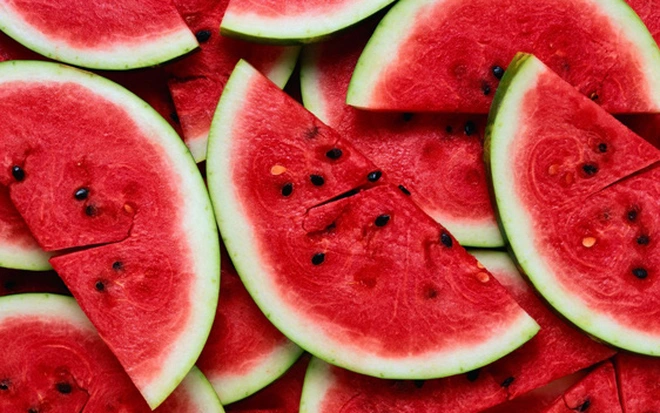
Top Tips for Choosing a Ripe, Sweet Watermelon
1. Check the Field Spot (Ground Spot)
- Look for a creamy yellow or buttery golden spot on the watermelon’s surface — this is where it sat on the ground and ripened in the sun.
- Avoid white or very pale spots — those watermelons are likely underripe.
2. Look for Webbing or Sugar Lines
- The brown, rough web-like patterns (called sugar lines) indicate that bees pollinated the flower multiple times.
- More pollination = sweeter fruit.
- It may not look pretty, but webbing is a great sign of a sweet melon.
3. Knock on It – Listen to the Sound
- Tap or knock on the watermelon with your fingers.
- A deep, hollow sound = a ripe and juicy interior.
- A dull or flat sound = overripe or underripe fruit.
4. Inspect the Shape
- Pick a symmetrical watermelon — round or oval, but it should be uniform in shape with no dents or lumps.
- Irregular bumps might mean uneven ripening or poor growing conditions.
5. Check the Weight
- A good watermelon should feel heavy for its size — that means it’s full of water and juicy.
- Compare several watermelons of similar size and choose the heaviest one.
6. Examine the Skin
- The rind should be dull, not shiny. A shiny surface usually means it’s underripe.
- The stripes (on striped varieties) should have a strong contrast — the dark stripes should be dark, and the light stripes light.
7. Look at the Tail
- The watermelon’s stem or tail can indicate ripeness:
- A dry and curly brown tail = ripened on the vine (sweet and ready to eat).
- A green tail = likely harvested too early, and may not be fully ripe.
8. Thin Rind Clue: Tap for “Bounce”
- A watermelon with a thin rind often produces a slightly more resonant, bouncing sound when tapped, compared to thicker-rind ones.
- While it’s hard to tell rind thickness without cutting, heavier weight-to-size ratio often points to more flesh and a thinner rind.



